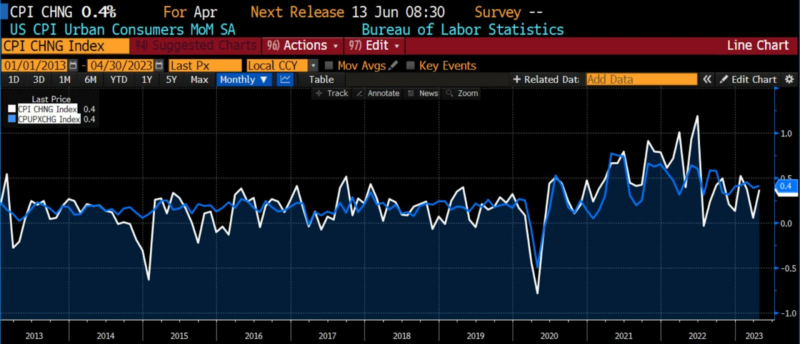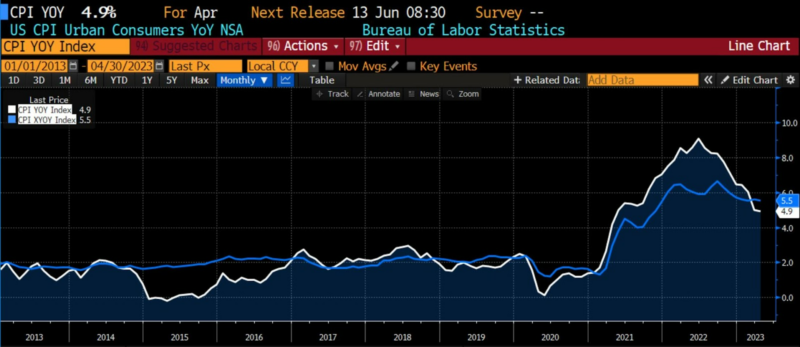
AIER’s Everyday Price Index (EPI) rose 0.60 percent in April 2023 following being essentially unchanged in March and rising 1.6 percent in January and February. The index now stands at 284.4, up 3.61 percent on a year-over-year (April 2022 to April 2023) basis. The constituents seeing the largest increases over the last month were motor fuel, domestic services, and food-away-from home, while the largest declines occurred in household fuels and utilities, internet services and electronic information providers, and recreational reading materials.

On May 10th, the US Bureau of Labor Statistics released the April 2023 Consumer Price Index. The month-over-month headline CPI registered an 0.4 percent gain, which met expectations. Core CPI also met expectations of an 0.4 percent increase on a month-over-month basis. The categories which saw the largest monthly price increases in March to April 2023 among headline CPI constituents were shelter, used cars and trucks, and gasoline. The biggest declines in the headline index were seen in fuel oil and utility gasses, which corresponds with the declines seen in the EPI category “household fuel and utilities.”
Core CPI saw its largest price increases in shelter, used cars and trucks, motor vehicle insurance, and recreation while airline fares and new vehicles lead declining prices.
April 2023 US CPI headline & core, month-over-month (2013 – present)

Shifting to the year-over-year data, headline CPI increased by 4.9 percent between April 2022 and April 2023, which beat expectations of a 5.0 percent increase. Core CPI year-over-year was reported at 5.5 percent, which met expectations. The core number exceeded the headline number for the second time (the first being last month) since early 2022.
April 2023 US CPI headline & core, year-over-year (2013 – present)

The CPI falling to 4.9 percent marks its first sub-5 percent reading in two years, and is likely to support the Federal Reserve’s pause in rate hikes. Shelter costs, which have been a major factor in the stickiness of service prices, rose 0.4 percent last month: a substantial increase, but the smallest in over twelve months. Additionally, an inflation measure focused upon by Fed Chair Jerome Powell, the supercore CPI (CPI minus food, energy, and housing) also saw a month-to-month increase of 0.1 percent, its smallest since mid-2022. Goods prices, however, were up 0.6 percent in April, the most since June 2022.
It is likely that the disinflationary impact of tighter credit conditions driven by fears within the banking system have not yet shown up in the US economy. Despite some good news regarding price levels, the Fed will likely need to see a continued, consistently broad ebb in prices before their hawkish stance softens. There nevertheless remains a chance that, with an accelerating decline in output and/or an unanticipatedly rapid increase in unemployment, the Fed will pivot away from its inflation fighting role, returning to an accommodative bias.


0 Comments